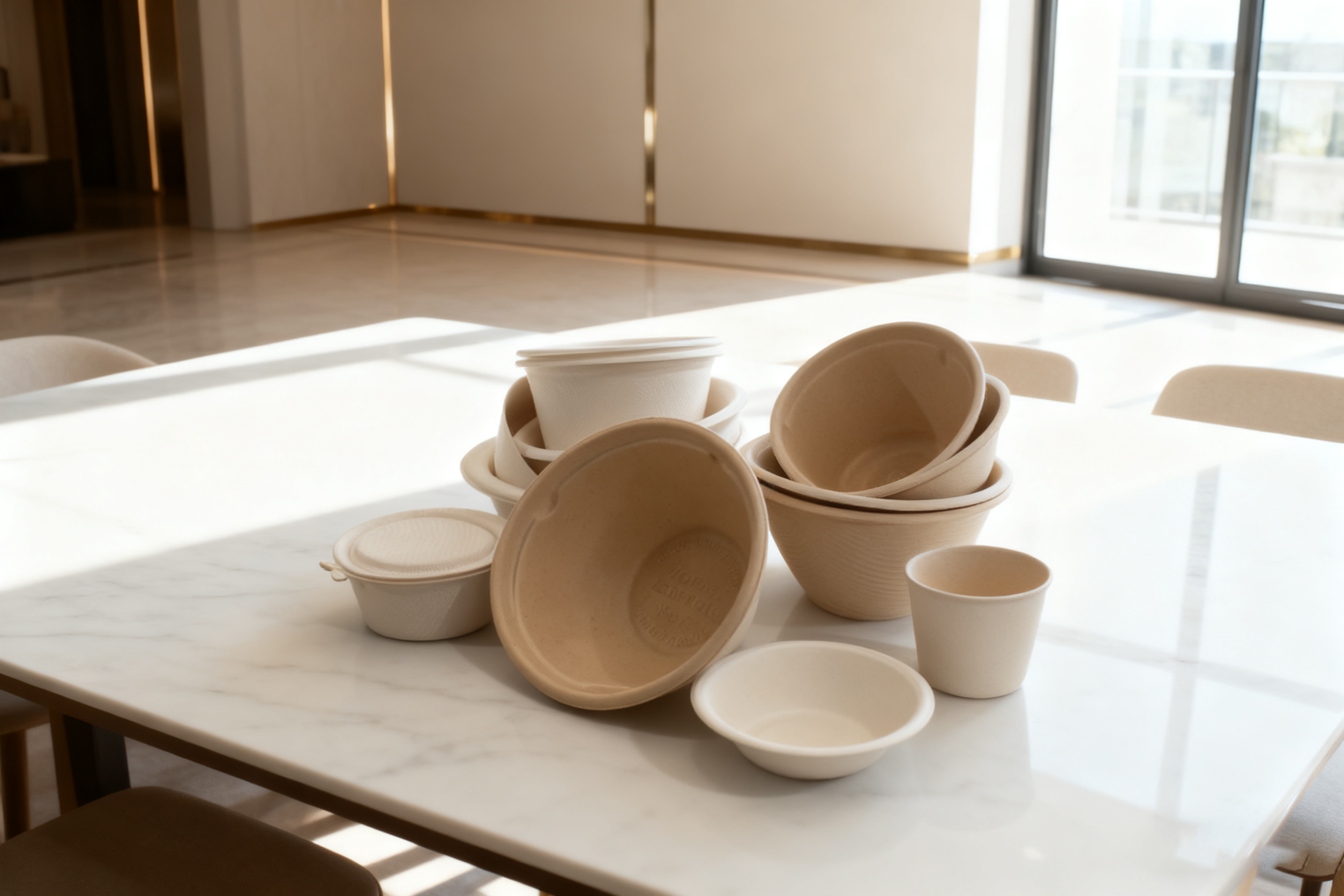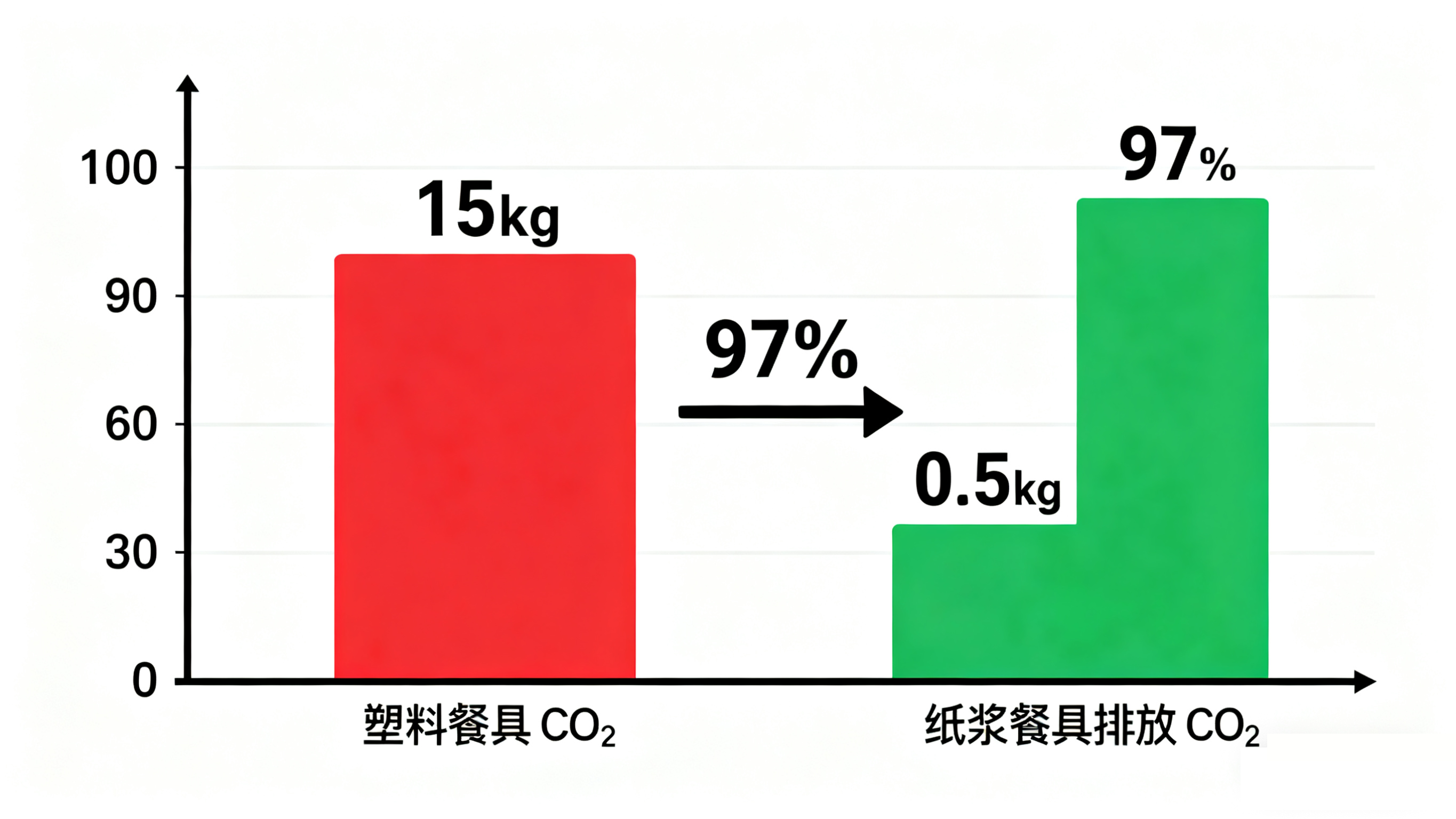
[News]Pulp Molding Tableware Upholds a Health Barrier
Release time:
Nov 13,2025
Driven by both plastic bans and health demands, pulp molding tableware is moving from an environmental concept to a mainstream market product. Its core advantages lie in every link of its full life cycle.
I. Invisible Invasion: Microplastics Are Devouring Health
When you use a disposable plastic food container to hold hot soup, you may not realize that a silent invasion has already begun. A 2025 study by the University of California showed that more than 25,000 microplastic particles are released within 15 minutes of pouring hot drinks into disposable paper cups. When nylon tea bags are soaked in 95°C hot water for 5 minutes, the number of released plastic particles reaches an astonishing 14.7 billion. These pollutants, with a diameter of less than 5 millimeters, are infiltrating the human body through diet, respiration, and even skin contact.
More alarmingly, a 2025 study in Nature Medicine confirmed that the concentration of microplastics accumulated in the brain is far higher than that in liver and kidney function organs. The sample content in 2024 reached 4917 micrograms per gram, an increase of 50% compared with 2016. These particles are like latent health killers. This health crisis spreading across dining tables makes the research and development of alternative materials an urgent priority.
II. Green Alternative: The Environmental Revolution of Pulp Molding

Driven by both plastic bans and health demands, pulp molding tableware is moving from an environmental concept to a mainstream market product. Its core advantages lie in every link of its full life cycle.
- Raw material revolution reduces carbon footprint sharply: Unlike plastic tableware, which relies on petroleum refining, pulp molding is based on plant fibers. Sugarcane bagasse tableware is a typical example — its production emits only 0.5kg of CO₂ per kilogram, 97% lower than the 15kg of plastic tableware. Its full-life-cycle carbon footprint is only 1/5 of that of plastic.
- Performance breakthroughs break usage limitations: The oil and water resistance issues that once restricted pulp tableware have been solved through technological innovation.
III. Consumption Transformation: From Passive Defense to Active Choice
The exposure of microplastic hazards is reshaping consumer awareness. When chain brands such as Starbucks and McDonald’s began to adopt a direct supply system for pulp molding tableware, and when Shanghai’s "strictest plastic restriction order" drove a daily demand increase of 2 million pulp tableware units, eco-friendly choices have transformed from social responsibility into a market rigid demand.
With the natural property of complete degradation within 3-6 months, combined with the practical performance of oil resistance and heat resistance, pulp molding tableware stands out in competition with plastic and starch-based tableware.

Conclusion: Health Awakening Behind the Tableware Revolution
From microplastic detection reports in laboratories to tableware replacement on dining tables, this environmental revolution related to health has already begun. The rise of pulp molding tableware is not only an effective counterattack against "white pollution" but also a microcosm of humanity re-examining its relationship with nature. When every dining choice becomes a health guard, environmental protection is no longer a distant concept but a lifestyle integrated into daily life. In this protracted war against microplastics, the iteration of tableware may be the starting point of victory.
Relate Blog
undefined
Minjie Eco-Machinery Technology Co., Ltd.
Factory
Tangxia Town, Pengjiang District, Jiangmen City, Guangdong, China
Operation Center
Lihe Science Park, Shishan Town, Nanhai District, Foshan City, Guangdong, China



